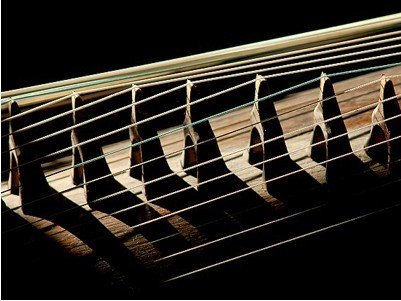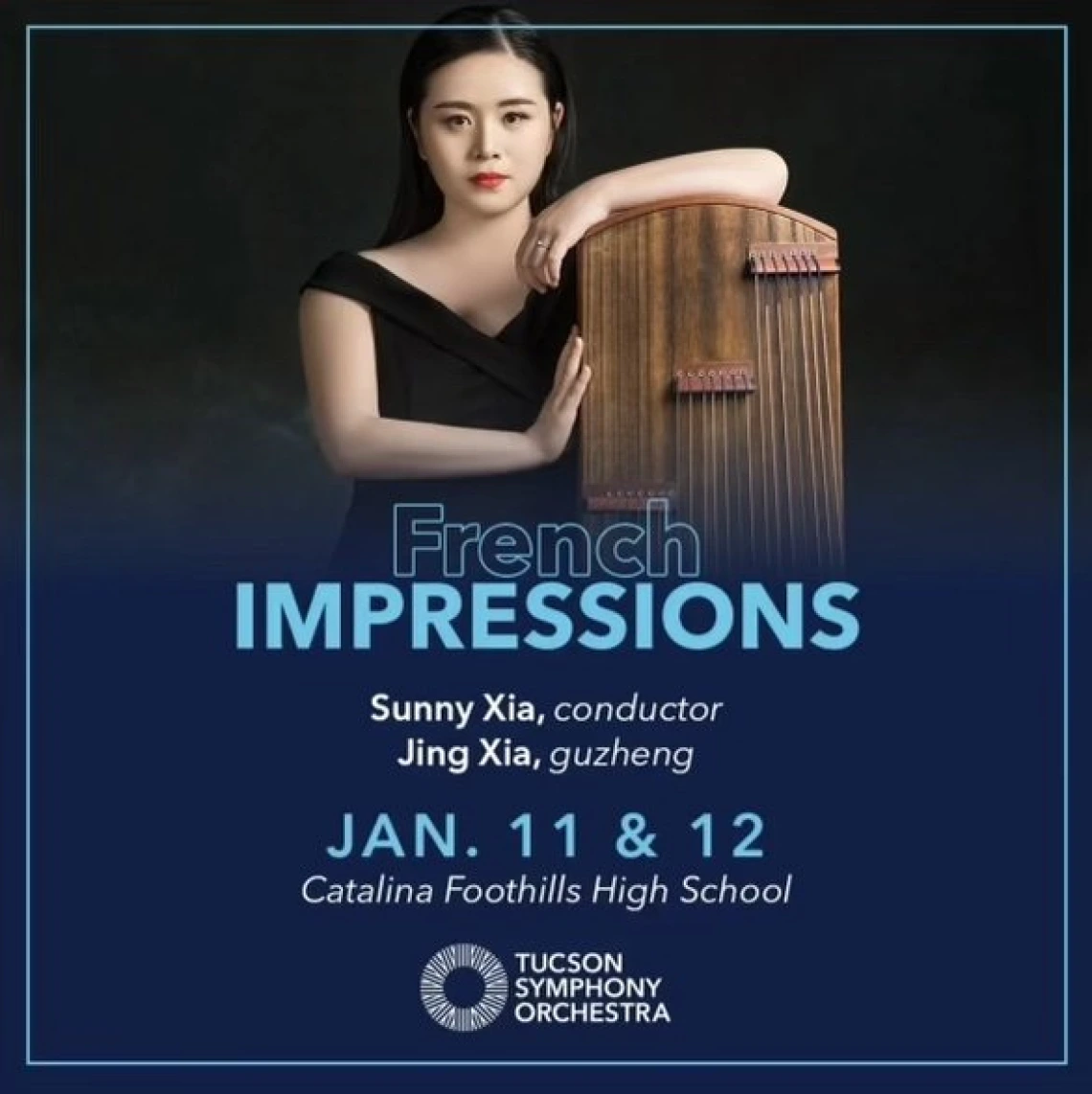Ms. Jing Xia performed Tan Dun’s Concerto for String Orchestra and Zheng with the TSO string orchestra. This piece was adapted from Tan Dun’s original Concerto for String Orchestra and Pipa, which draws inspiration from his theatrical work, Ghost Operas.
The concerto begins with a minimalist approach, setting a foundational atmosphere that leads to a dynamic exploration of various American dance rhythms while maintaining a cohesive musical narrative. Throughout the piece, listeners will encounter direct quotations from Johann Sebastian Bach, specifically from the “Prelude in C-sharp Minor” from Book II of The Well-Tempered Clavier. These elements pay homage to the Western musical canon and act as a bridge connecting different musical and cultural epochs. Central to the concerto is the guzheng, whose strings pull at the essence of traditional Chinese music, extracting and emphasizing native tones and styles that resonate with the piece’s thematic exploration of past and future dialogues. |
|
|---|
| |
Ghost Opera, the root inspiration for this concerto, is a five-movement work that combines the mediums of string quartet and pipa with elemental sounds created by water, metal, stones, and paper. Described by Tan Dun as a meditation on human spirituality amidst the chaos of urban life and technological advancement, it draws from a vast array of cultural and temporal elements, including Chinese and Tibetan traditions, English literature, and American cultural forms. This work deeply reflects the shamanistic “ghost operas,” which facilitate a mystical dialogue between the living and the spirits of past and future generations, nature, and beyond. |
|  |
|---|
|
 | In this Zheng Concerto, the guzheng not only adapts to the roles filled initially by the pipa and string orchestra but also transcends them, creating a dialogue that weaves through the temporal and spiritual themes of the original work. The integration of Bach and Shakespeare, alongside traditional Chinese folk music like “Little Cabbage,” symbolizes a confluence of the old and new, the East and West, the physical and metaphysical. |
|
|---|
|




